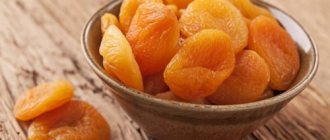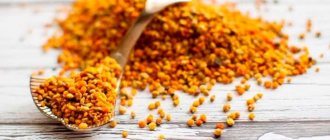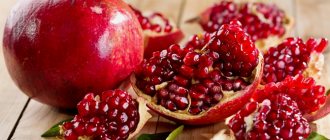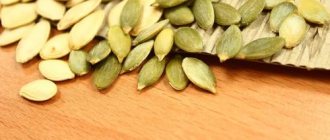Raisins are a dried fruit beloved by many, which perfectly replaces the usual unhealthy sweets and is used in the preparation of a wide variety of dishes and drinks. This product has a lot of useful properties, however, despite this, not everyone can eat it. So, it is not always and not in any quantity allowed to consume raisins for pancreatitis.
Raisins have a lot of useful properties, however, despite this, not everyone can eat them.
When you can and cannot eat dried fruits
By consuming dried fruits for pancreatitis, the lack of essential substances is compensated. Allowed for use in small quantities.
Acute pancreatitis
Fasting is the recommended therapy for acute pancreatitis. During the first days of symptoms, you should not eat, removing the load on the pancreas. In the acute form, after fasting, the use of dried fruits when preparing compote or infusion is allowed. The pulp is not eaten due to the presence of fiber and the abundance of carbohydrates, which are quickly absorbed and burden the digestive system. The soft boiled parts are removed by straining the liquid. No sugar is added during the cooking process; a sweetener is added for sweetness.
Acute pancreatitis and dried fruits prepared in a form other than liquid are incompatible concepts. When choosing dried fruits, pay attention to prunes, apples and pears. Is it permissible to cook dried apricots for pancreatitis? Yes, dried apricots are allowed, with similar restrictions.
Chronic pancreatitis
The form of the disease is expressed by alternating periods of exacerbations and remissions. During exacerbations and in acute form, the consumption of dried fruits is limited to compotes and infusions.
During the period of remission, dried fruits are allowed; before consumption, they must be washed and soaked in hot water, removing harmful substances applied by the manufacturer in order to deliver the goods to the buyer in safety and in decent form.
It's time to add to the list of dishes involving dried fruits. Now this includes porridges, casseroles, baked or stewed meats, pilaf, mousses and jellies, and dressing sauces.
The permitted amount of dried fruits per day does not exceed 80 g. If the patient has impaired glucose metabolism, the consumption of dried apricots should be limited. In any form of pancreatitis, the use of such sweets is determined by the attending physician who developed the patient’s diet.
How to properly consume dried fruits
When consuming dried fruits, it is important to follow some recommendations. The main ones are described in the table.
| Recommended dosage | Up to 5 dried fruits per day |
| Other cooking methods | Dried fruits can be used to create various decoctions, tinctures and compotes. The main thing is not to add sugar. |
| Use in the acute period | At the time of exacerbation of the disease, any, even permitted, dried fruits are used only to create decoctions and compotes. |
You also need to take a responsible approach to the selection of dried fruits. It is advisable to purchase the natural component in packaging, and not by weight.
Benefits of dried apricots
The value of dried apricots is expressed by many beneficial properties. Dried fruit exhibits the ability to cleanse the body of waste, toxins, and heavy metals.
For cardiovascular diseases, potassium and sodium contained in dried apricots stabilize water balance and normalize blood pressure. Such diseases include arrhythmia, angina pectoris, and hypertension.
Dried apricot is a dried apricot, the dried fruit contains more potassium than the fresh fruit and is more beneficial.
The substances contained in dried apricots that are essential for health include: vitamin B5, iron, phosphorus, calcium, magnesium, and organic acids. Due to the difficulty of digesting food, the amount of absorbed nutrients decreases; it is recommended to replenish them through the consumption of dried fruits.
Chronic pancreatitis is often accompanied by anemia; iron, necessary for blood production, is replenished by eating dried apricots.
Dried apricots contain vitamin A in limited quantities. The enzyme supports vision, slows down the aging process, and prevents the appearance of cancer. As a dietary product, dried apricots contain microelements necessary for the body; taking dried apricots is encouraged during fasting days. Dried fruits are used as a natural laxative, helping with constipation and serving to cleanse the intestines. The diuretic property of dried apricots is in demand when cleansing the body of harmful substances.
Benefits and harms
Raisins are nothing more than dried seedless grapes. This method of preparing grape fruits for future use allows you to preserve all the beneficial properties of fresh berries, thanks to which the finished dried fruit contains a large amount of microelements and vitamins.
These are potassium, iron, magnesium, calcium, phosphorus, vitamins B1, B2, PP.
Raisins have the following properties:
- improves the functioning of the heart and blood vessels;
- helps normalize digestive processes and stimulates intestinal motility;
- increases immunity;
- stabilizes the functioning of the nervous system;
- strengthens bone tissue;
- cleanses the liver;
- prevents the development of anemia;
- improves the functioning of the urinary organs, reduces swelling.
At the same time, we must not forget that if used incorrectly and excessively, raisins can cause much more harm to health than good.
The main danger of this dried fruit is the high content of natural sugars, which determine the high calorie content of the product.
These substances can worsen the condition of patients with diabetes and lead to obesity if a person eats raisins in unlimited quantities. In addition, dried fruit is harmful for some gastrointestinal diseases, as it can provoke an exacerbation of digestive pathologies.
Negative impact
If dried apricots are eaten in large quantities, the body is harmed. This is due to the high sucrose content - 80% in dried fruits.
To process such a volume of sweets, an appropriate amount of insulin is required. With pancreatitis, the secretory function of the pancreas is reduced, due to which the hormone insulin is produced in smaller quantities, as a result, blood sugar levels increase, leading to diabetes.
Without reducing blood sugar levels, the patient forces the gland to work at its limit, adding new diseases to the list of already established diagnoses. It is recommended to use less sweet varieties of dried apricots.
Laxative properties, often beneficial, have a negative effect in pancreatitis. Be careful and don't go overboard with the quantity. For diseases of the gastrointestinal tract accompanying pancreatitis (ulcers, gastritis, etc.), it is recommended to limit the consumption of dried fruits. Possible harm is caused by the fiber contained in dried apricots in a fair amount; it can overload the gland.
Eating dried apricots for inflammation of the pancreas
By adhering to certain rules, the patient can reduce the risk of possible negative effects and use the food product to the maximum, receiving the necessary vitamins and microelements. Dried apricots for pancreatitis are taken outside the period of exacerbations; it is better to limit the intake to 2-5 pieces.
Choose a variety of dried fruit that is neither sweet nor sour. Sweet will affect blood sugar levels, and sour will increase the load on the gastrointestinal tract, already weakened by the disease.
It is not recommended to eat dried fruits on an empty stomach. You should have a snack beforehand. There is no need to completely exclude dried apricots from the diet; they are full of beneficial properties necessary for pancreatitis. When choosing dried apricots, pay attention to the appearance. Dried apricots are supposed to be matte, wrinkled, fairly orange, and not transparent.
To restore the nutritional properties, dried apricots are soaked in hot water or apple juice. After soaking, it is used as an ingredient for various dishes, stewed with meat, rice, steamed with vegetables, or simply eaten soaked. It is useful to add dried fruits to dairy products: natural yogurt, low-fat cottage cheese, kefir, fermented baked milk.
Compote of dried apricots
Compote of dried fruits does not put a strain on the digestive system. It is tasty and the benefits are obvious. The drink quenches thirst in the heat, gives strength to the body, nourishing it with vitamins and minerals at any time of the year, especially in winter, with an obvious lack of immunoprotectors of natural origin.
- People who do not suffer from diseases of the gastrointestinal tract add any dried fruits and berries to the compote. For pancreatitis, you need to be careful in selecting components, avoiding harm to the body. The best choice for acute pancreatitis in the weakening phase is a compote containing dried apples and pears.
- For pancreatitis, add several prunes to the compote. Before adding dried fruits during cooking, they are thoroughly washed to prevent chemicals contained on store-bought fruits from getting into the food.
- The natural sweetness of fruit will replace sugar; no need to add sweetener; add substitutes if desired. This way the drink will be more dietary and less caloric.
To prepare the compote, pour 100 g of dried apples and 100 g of pears, and a few pieces of dried apricots into a pan filled with water (2 liters), after the liquid has boiled. After boiling again, cook for 5 minutes, leave to cool.
Recipes
Recipes with the addition of raisins will be a good help for patients with pancreatitis.
Beverages
Compote is considered the most harmless raisin-based drink for pancreatitis: if it is prepared correctly, then its use will not affect the inflamed pancreas in any way. Compote contains much less sugar and fiber than whole dried fruit.
We recommend reading: Green beans for chronic pancreatitis
To prepare this drink, you need to take 200 g of raisins, rinse and pour boiling water over them for 10-15 minutes. After this, drain the liquid, transfer the fruits to a saucepan, add 2 liters of water and put on fire. When the compote boils, it needs to be boiled for 15 minutes, then removed from the stove, covered with a lid and a towel and left for 4 hours. Adding sugar is not recommended.
You can use a gentle recipe for preparing a drink with raisins, which allows you to retain more nutrients. 100 g of washed and finely chopped dried fruit should be poured with 300 ml of water, brought to a boil and left to cool completely under a closed lid. It is recommended to strain the broth before use.
Dishes
Raisins can be added to porridges allowed for pancreatitis. Dried fruit goes especially well with oatmeal, rice and semolina.
To prepare a tasty and healthy breakfast dish, you need to cook the porridge and simply add a small handful of raisins pre-soaked in boiling water.
The natural delicacy can also be used in cottage cheese casseroles. To make such a dish, you need to mix 500 g of low-fat cottage cheese, 2 tbsp. l. semolina, 2 eggs, 2 tbsp. l. sugar, a handful of raisins. The resulting mass is spread in an even layer into a deep pan, pre-greased with vegetable oil, and baked in the oven for 20-30 minutes.
For lunch or dinner, you can cook pilaf with dried grapes. To do this you will need 300 g of rice, 3 glasses of water, 3 tbsp. l. raisins, 5-6 prunes. Rinse the cereal, soak in boiling water for 10 minutes, then drain the liquid, pour the rice into boiling salted water. Add dried fruits to the same pan and cook until all the liquid is absorbed. Cover the container with a lid and place in a heated oven for 20 minutes. It is allowed to add 1-2 tbsp to the finished pilaf. l. melted butter.









